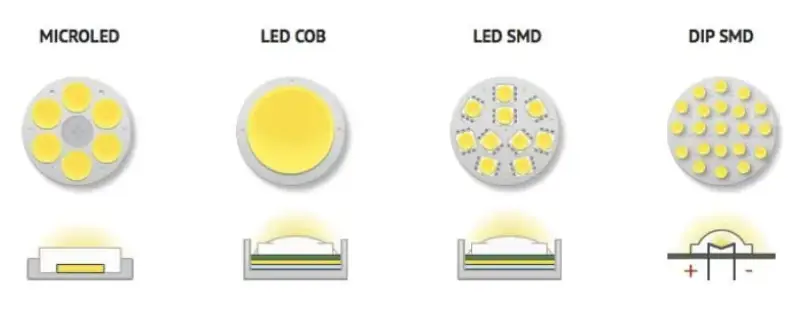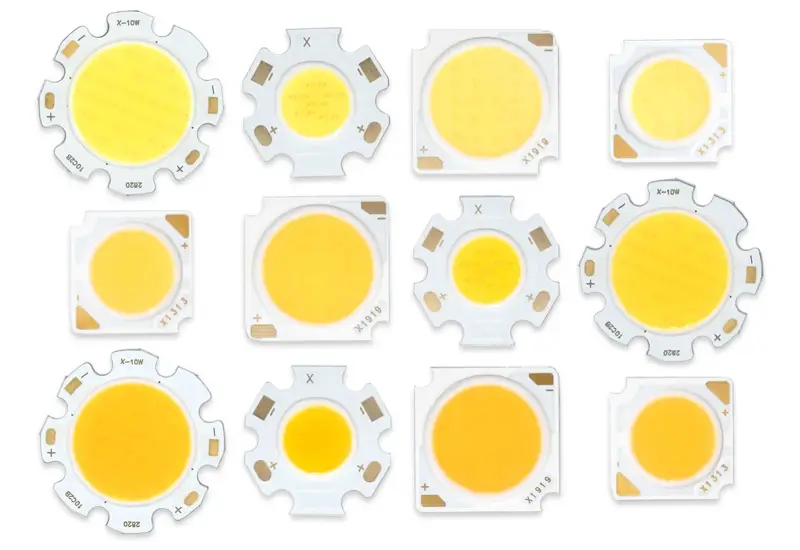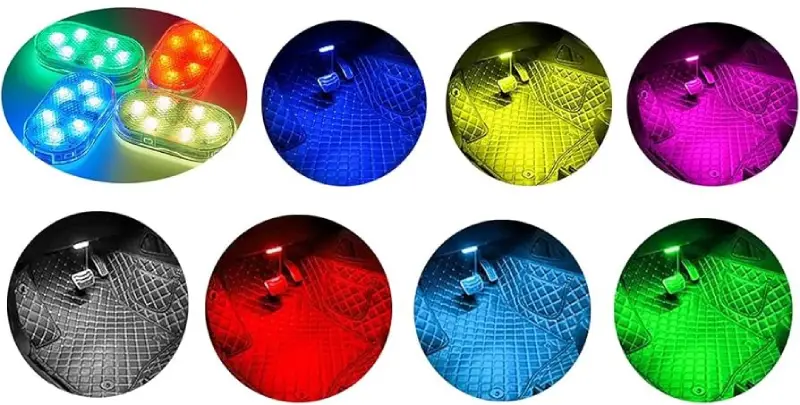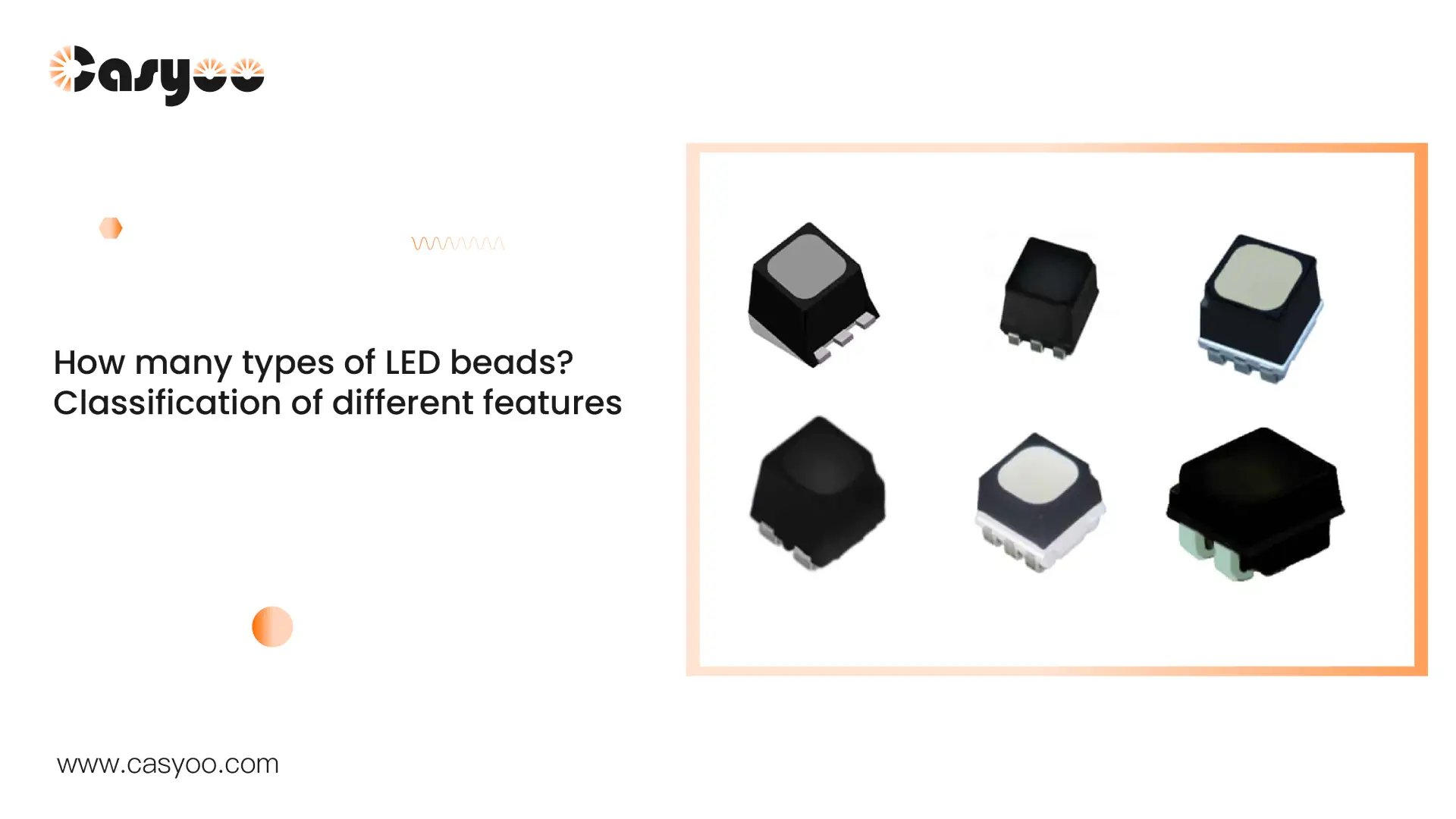LED (Light Emitting Diode) beads are a type of semiconductor light source widely used in the fields of lighting, display, and indicator lights. With the development of technology, the types and models of LED beads are becoming increasingly diverse. It is crucial to understand the characteristics and uses of different models when choosing LED beads.
Overview of Classification of LED Beads
LED (Light Emitting Diode) beads are a type of semiconductor light source that can be classified based on their packaging type and power characteristics. The packaging types mainly include patch type, direct insertion type, high-power type, and COB (Chip on Board) type, and the power size is usually expressed in watts (W), including 0.06W, 0.5W, 1W, 3W, 5W, etc.
LED beads have a wide range of applications in various fields. In the field of lighting, LED beads have gradually replaced traditional incandescent and fluorescent lamps as the mainstream lighting source due to their advantages of high efficiency, energy saving, long lifespan, and environmental protection. In the automotive industry, LED beads are widely used in car lights and interior lighting, improving the safety and aesthetics of vehicles. In the field of electronics, LED beads are used for display screens, indicator lights, backlights, etc., providing excellent display effects and user experience for electronic products.
Main models of LED beads

LED beads come in various packaging types, each with its unique features and usage scenarios. The following are the main models and characteristics of LED beads:
1. Surface mounted LED beads
Features: Surface mounted LED beads have simple packaging, small size, and are suitable for scenarios that require compact space and high-density layout.
Usage scenarios: Commonly used for indicator lights, backlights, panel indicator lights in electronic products, as well as decorative lights and low-power lighting in lighting fixtures.
2. Direct insertion type LED beads
Features: The direct insertion type LED beads have standard pins, which are easy to install and replace, and have good stability.
Usage scenarios: Commonly used in outdoor lighting, road lighting, landscape lighting, and other scenarios that require high brightness and durability.
3. High power LED beads
Features: High power LED chips typically have higher power and brighter lighting effects, but also require higher heat dissipation.
Applicable scenarios: Suitable for scenarios that require high brightness and long-distance lighting, such as industrial lighting, car lights, billboard lighting, etc.
4. COB (Chip on Board) type LED beads
Features: COB type LED beads integrate multiple LED chips on the same substrate, emitting light evenly and achieving a more uniform lighting effect.
Usage scenarios: Commonly used in indoor lighting, commercial lighting, stage lighting, and other scenarios that require large-scale lighting.
In addition, the size and shape of LED beads also vary, with common sizes including 0603, 0805, 1206, etc., and shapes including circular, square, and rectangular. When selecting LED bead models, it is necessary to choose according to specific application scenarios and requirements to achieve the best lighting effect and performance.
Power classification of LED beads

LED beads can be divided into multiple levels based on power, and each level of LED beads has different characteristics and applicable fields:
1. 0.06W LED beads
Features: Low power, usually used for low-power applications such as indicator lights and backlights.
Application areas: Commonly used in indicator lights, small decorative lights, etc. in electronic products.
2. 0.5W LED beads
Features: Moderate power, bright luminous effect, relatively low heat dissipation requirements.
Application areas: commonly used in small decorative lamps, landscape lighting, commercial lighting, etc. in lighting fixtures.
3. 1W LED beads
Features: Moderate power, good luminous effect, widely used in various lighting products.
Application areas: Used for indoor lighting, outdoor lighting, automotive lighting, billboard lighting and other scenarios.
4. 3W LED beads
Features: High power, bright luminous effect, suitable for scenes requiring high brightness.
Application areas: Commonly used in industrial lighting, car lights, stage lighting, and other scenarios that require high brightness.
5. 5W LED beads
Features: High power, strong luminous effect, usually used for high-power lighting products.
Application areas: mainly used in outdoor lighting, high illumination lighting, industrial equipment lighting and other fields.
Color and spectrum of LED beads

LED beads can emit light in multiple colors, including red, yellow, green, blue, and white. Each color types of LED beads have its specific operating voltage range and application scenarios
1. Red LED beads
Working voltage range: 1.8~2.2V
Features and Applications: Red LED beads are commonly used in scenarios such as indicator lights, billboards, traffic signals, and camera fill lights, with high visibility and recognition.
2. Yellow LED beads
Working voltage range: 2.0~2.4V
Features and Applications: Yellow LED beads are commonly used in decorative lights, indoor lighting, landscape lighting, and other scenes, with a soft and warm lighting effect.
3. Green LED beads
Working voltage range: 2.2~2.8V
Features and Applications: Green LED beads are commonly used for indicator lights, green decorative lights, plant growth lights, etc., with a fresh and bright lighting effect.
4. Blue LED beads
Working voltage range: 2.8~3.5V
Features and Applications: Blue LED beads are commonly used in stage lighting, aquarium lighting, special effects lighting, and other scenes, with strong visual impact.
5. White LED beads
Working voltage range: 2.8~3.6V
Characteristics and Applications: White LED beads are usually divided into two types: cool white light and warm white light. Cool white light is suitable for outdoor lighting, street light, car lights, and other scenes that require high brightness, while warm white light is suitable for indoor lighting, commercial lighting, and other scenes, with a comfortable and warm lighting effect.
Other parameters of LED beads
In addition to color and electrical performance, the performance of LED beads can also be described by the following parameters:
- Luminous flux: The luminous flux of LED beads refers to the amount of light energy emitted per unit time, usually measured in lumens (lm). The luminous flux determines the brightness of LED beads and is an important indicator for measuring their lighting effect. In general, the higher the luminous flux, the better the lighting effect of LED chips.
- Color temperature: The color temperature of an LED bead describes the color characteristics of the light it emits, usually expressed in Kelvin (K). The higher the color temperature, the closer the emitted light is to blue, and the lower the color temperature, the closer the emitted light is to yellow. Common color temperatures include warm white light (2700-3500K), natural white light (4000-5000K), and cool white light (5500-7000K).
- Color Index (CRI): The CRI is an indicator that measures the ability of LED chips to reproduce the true color of objects. Its numerical range is from 0 to 100, with higher values indicating better ability of LED chips to reproduce the color of objects. Generally speaking, LED chips with a CRI greater than 80 can effectively reproduce the true color of objects, making them suitable for scenes that require high color reproduction, such as art museums and commercial displays.
These parameters directly affect the lighting effect and applicable scenarios of LED beads. When selecting LED beads, these parameters should be considered based on actual needs and usage environment to achieve the best lighting effect and visual comfort.




